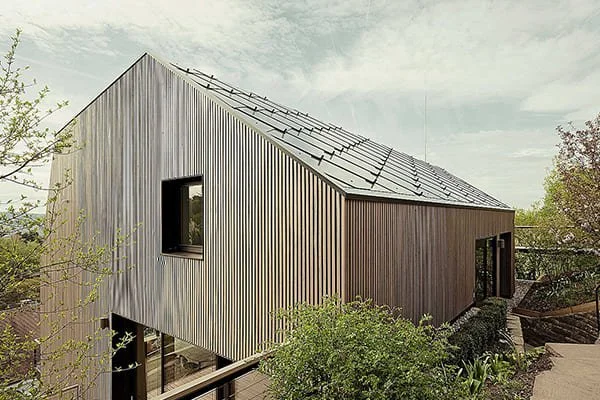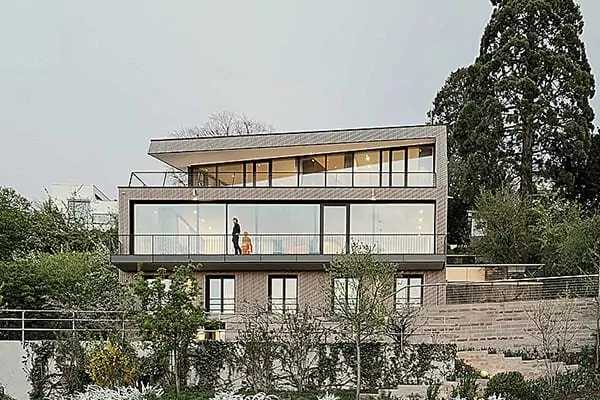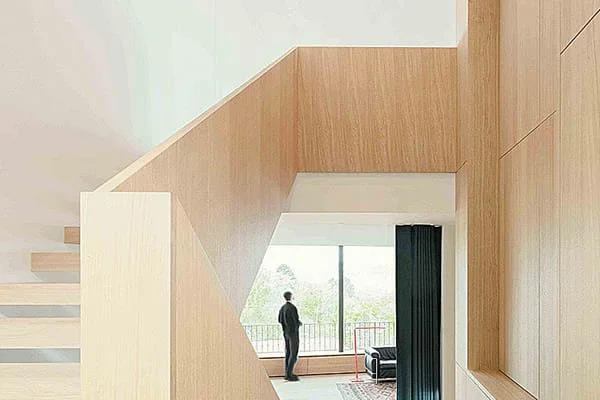Built
2016
Total Energy Generated
3,300 kWh
This award-winning residential complex in Stuttgart (southwest Germany) was completed in 2016 and integrates the SunStyle solar roof into an elegant modernist architecture by Yonder Architecture and Design. Most importantly, the building is a plus-energy building designed to feed surplus energy into the power grid over the long term. Geothermal wells provide groundwater that is used to heat and cool the ceilings and floors. SunStyle solar tiles cover the roof, and a highly insulated facade provides optimal protection from heat in summer and cold in winter. The residence generates 30 kWh/m2 and offsets 59% of the building’s total energy consumption with only 110 m2 of total roof area. Built on a steep hill overlooking the lush river valley of Stuttgart, House B offers impressive panoramic views from all levels.
Focus on the aesthetics
Yonder Architecture and Design teamed up with architect Stefan Behnisch, the owner of House B, to renovate this 1950s residential building. The goal was to combine design and ecology and create a symbiosis. With the SunStyle solar roof, the architects came one step closer to their vision of a house that produces more electricity than it consumes. The home’s solar roof is very noticeable when approached from the top of the hill. Accordingly, an innovative design was needed that respects the exterior aesthetics of the house and blends in with its surroundings. In addition to the elegant finished wooden interior, the house is distinguished by a variety of environmentally friendly features. There are battery storage units that access the collected solar energy in the evening, as well as a charging station to ensure e-mobility. Geothermal wells provide clean heating and cooling.
The advantages of a Sunstyle solar roof
Since the house was completed in 2016, Behnisch has incorporated the SunStyle into other designs, including that of Stuttgart’s Steiner School. The architect now calls the SunStyle solar roof his preferred solution for sustainable roofs. For Behnisch, there are several arguments for this. Clearly, the aesthetics are an important aspect, but so are the cost savings, since the solar tiles are also used as a roof structure, as well as the optimal energy generation provided by the solar roof.
You can find more information about this house in our interview with architect Stefan Behnisch.





